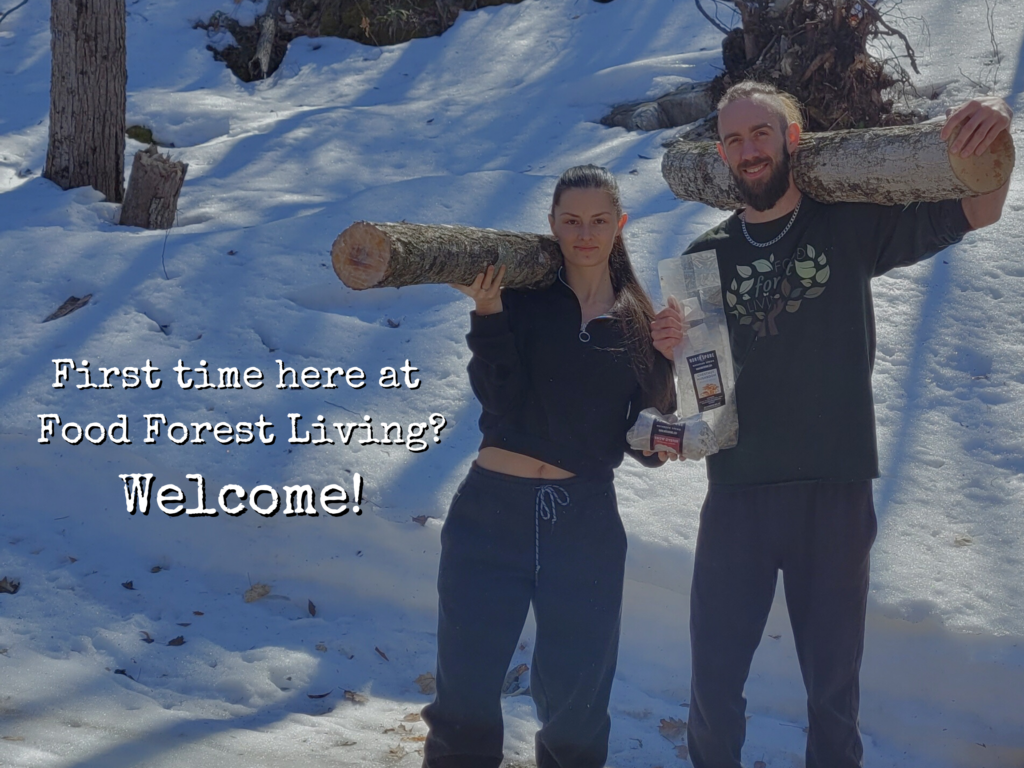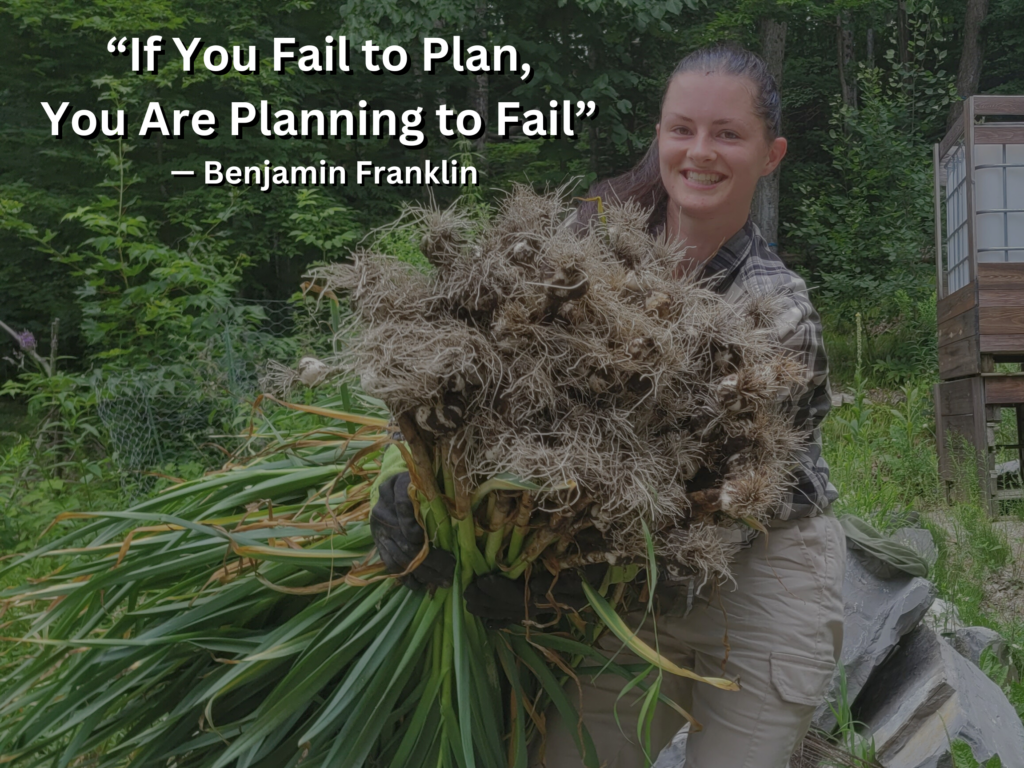
Our goal at Food Forest Living is to make growing a wide variety of food as straightforward as possible. I’m Rachelle (you can say ‘Rachel’), an active food grower, catcher, and forager.
I’ve been planning, planting, protecting, and profiting (in a regenerative way) from our food forest.
When I say profit, one could argue that we’ve put in way more than we’ve gotten out of it. But that statement is built around the limitation that money or an exchange of goods with another human is all one can ‘get.’
The amount we put in is the amount we want to put in. Even when we invest in planning guides, plants, or fences we receive healthy doses of activity, time outdoors in fresh air, new experiences, learning opportunities, and so much more.
So any money or trades we make from selling extra seeds, cuttings, mushrooms, forage tours, or workshops is profit.
What I’m saying is, when we’re ‘food foresting‘ we’re living.
A healthier environment, a seasonal schedule, and a connection to our truth is the dream. And when you’re actively chasing the dream and putting in the work, it gradually just happens, often without notice.
The information I share is based on what we’ve done and are doing. These insights are meant to provide you with a means and inspiration to accomplish your own desired way of life. It may not look the same as ours, but maybe it’ll start you off and guide you forward.
Here’s how we’re doing it:
Step 1: How to Plan
When it comes to planning a food forest that’ll feed you; consider two main things.
- The permanent layout for perennials
- The temporary layout for annual vegetables
Some food growers keep these completely separate spaces, while others combine them. Pros and cons exist for both!
We, however, combine them as we find it easier to replenish the soil in the annual beds.

No matter how you do it, you’ll need to reserve adequate space for staple vegetables:
Now that you know how much space to dedicate for annual crops, plan a permanent food forest with the remaining space!
We needed a plan that included building better soil than what we started with.
So, we’ve designed our garden in this repeating pattern: a swale with trees, a small walkway, perennials, a medium walkway, vegetable garden rows, and perennials. Swales are tree planting systems (explained by Geoff Lawton) that belong on flat land only.
Step 2: Plants to Grow
As part of the planning process, you’ll need to learn about the best plants you can grow.
In a food forest, you have “9 layers” of assorted perennial plants to choose from.
Find common and unique plants to include by exploring each category and while doing so, make a large wishlist of everything you think you’ll want.
- Trees & Shrubs (layers 7-9)
- Herbaceous Perennials, Tubers, Aquatic, & Vines (layer 3, 4, 5, & 6)
- Ground Covers (layer 2)
- Mushrooms (Layer 1)
- Herbs & Flowers
- Vegetables
Then sort your list into “must haves” after doing more research about each plant.
Your list should include plants you’ll want to eat from, plants that support pollinators, and plants that will provide mulch in the short term and long term.
Step 2: Protect Your Plants
Before ordering your plants, you’ll also need to make a protection plan and order needed materials.
Plant protective materials can be assembled before your plants arrive, or while you’re planting.
A large perimeter fence is best set up before you receive a batch of plants. Individual tree protectors can be set up around each tree after planting them.
Unfortunately, depending on your area, blocking pests is essential but not always 100% foolproof. Deterring pests from attempting to find ways around, through, or over your fencing may be necessary.
Once everything’s in place, plants are best protected with healthy soil and room to grow!
One of several benefits of our planned planting pattern (explained above) is that your compost (from perennials) is made right where you’ll need it most—to build soil and replenish the vegetable gardens.
Mulch the pathways with autumn plant material, then add it to the vegetable garden once broken down after a year, and repeat.
The permanent plantings around your temporary rows will provide all the compost you’ll need on the spot. Minimal distance to transport plant material means less work for you.
A functional environment, diversity, and compost are the keys to healthy soil.
See: Prepare the Ground for a Food Forest Properly (Full Guide)
What about weeds? Annuals and perennials are typically separate gardens for the sake of weed management. The methods used to manage weeds in vegetable gardens, however, often create more work in the end and at the great cost of poor soil.
To maintain weed-free vegetable plots within a perennial forest garden, we’ve been laying tarps.
See: Solarization Vs Occultation & The Best Tarps
Step 4: Profit
We wanted to grow a food forest not only for access to healthy fresh food but a healthy environment.
Working from home has kept us away from exposure to unhealthy environments and as a result, we’ve experienced a lot of growth, as people.
Among other things, we’ve found that growing mushrooms was a relatively easy way (compared to vegetables) to generate extra income.
